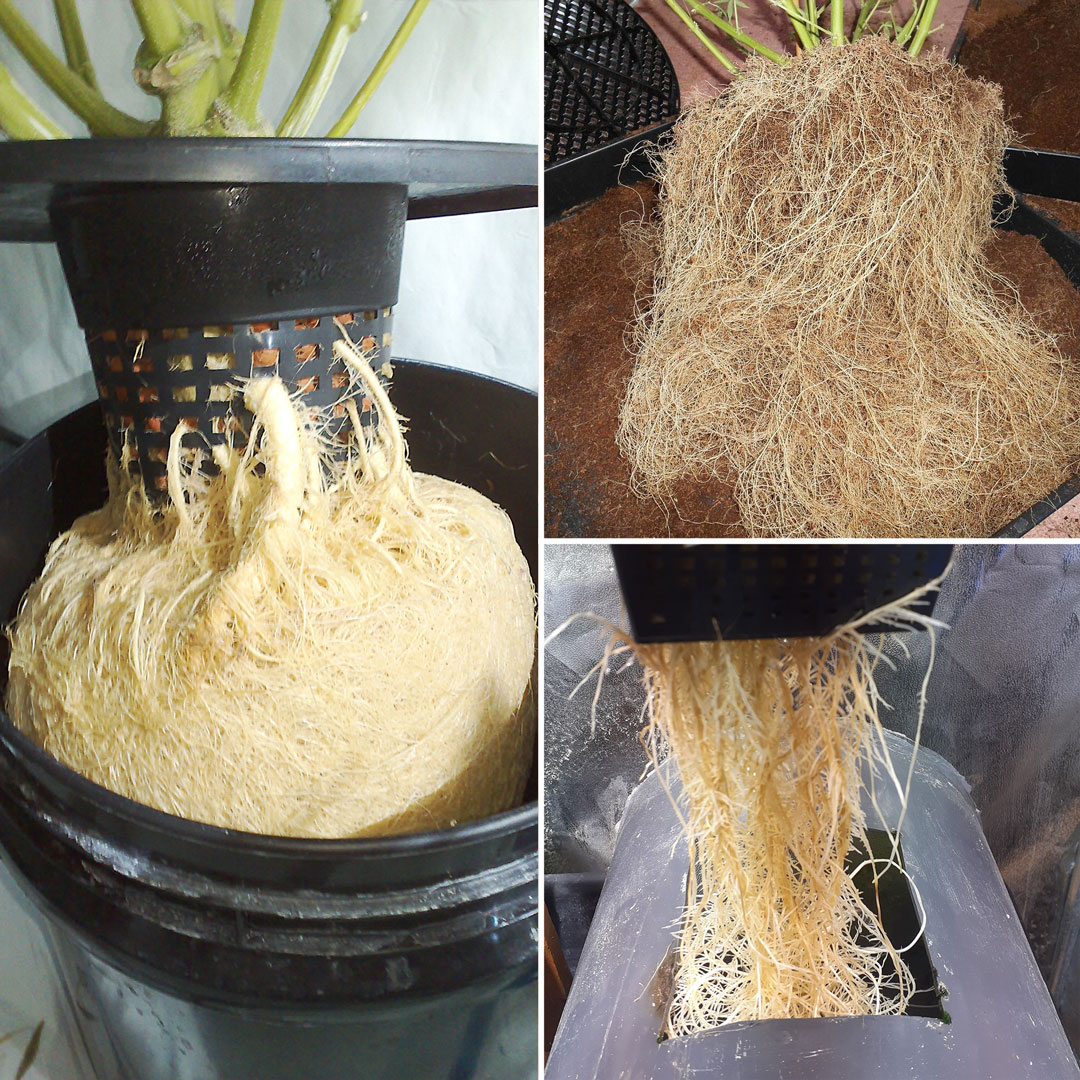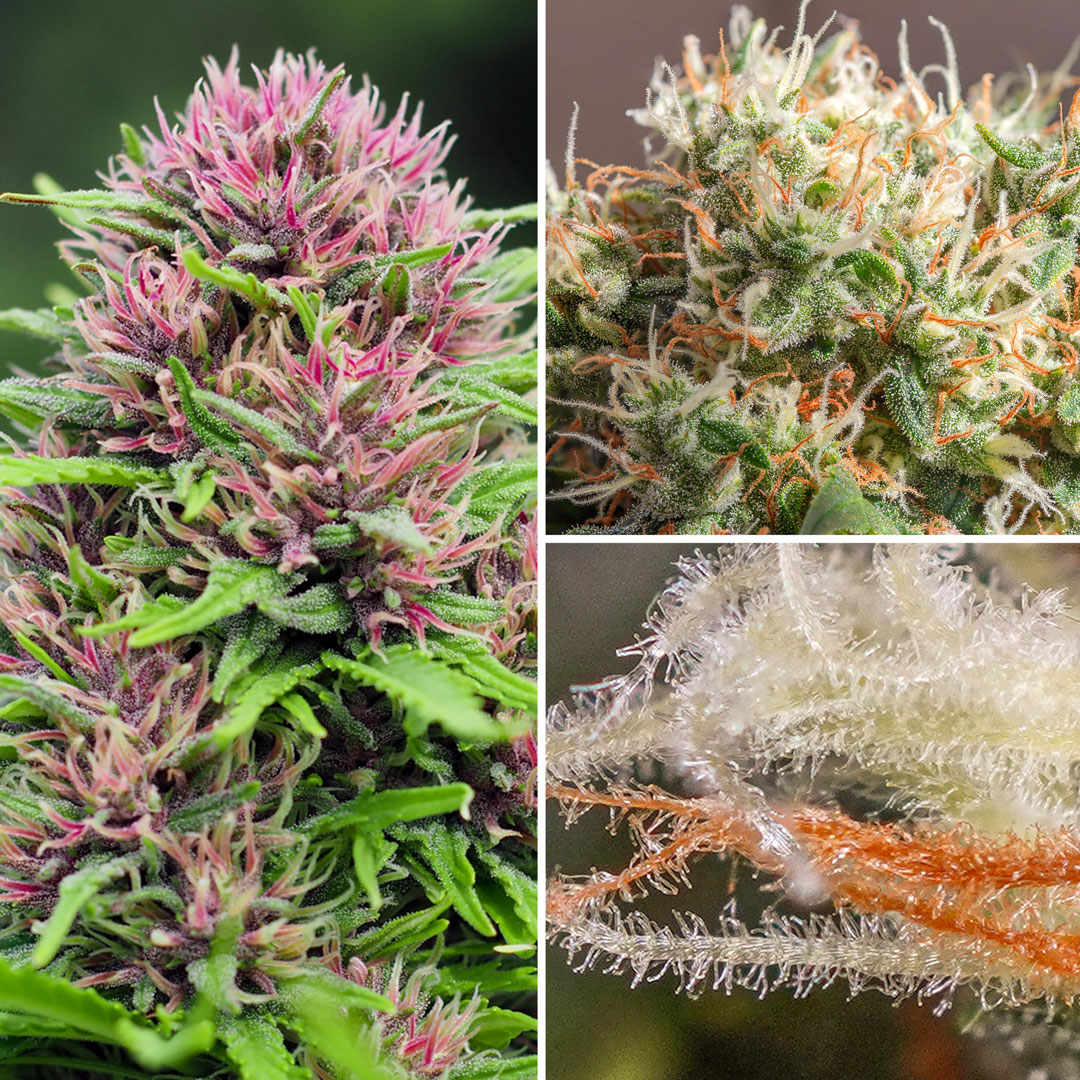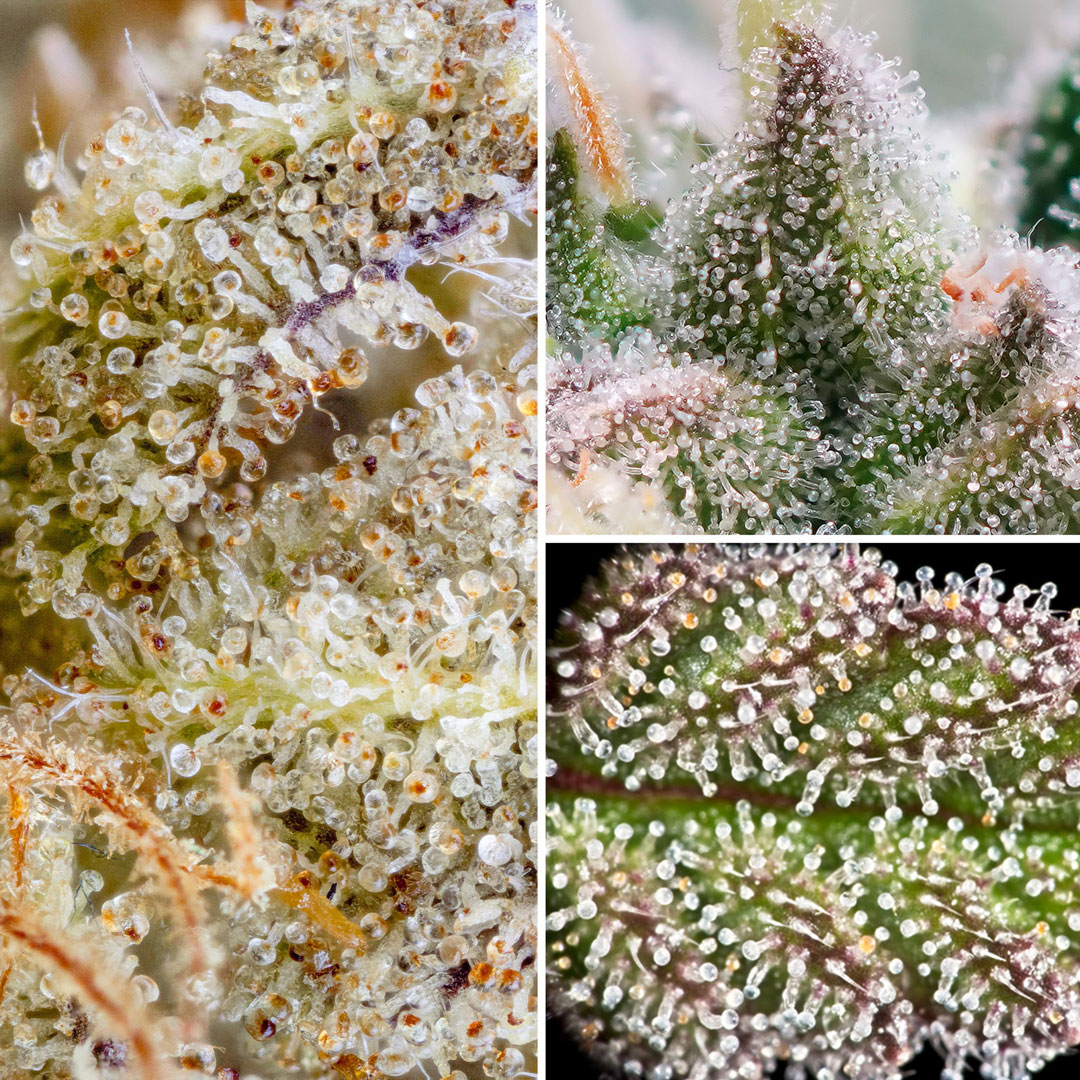Cannabis plants anatomy from seed to trichomes

The cannabis plant has exploded in popularity in the past few decades. Medical cannabis is available in many countries and recreational cannabis is widely available, whether legal or not. Many people grow their a few plants at home from cannabis seeds, here is some basic information on the plant anatomy which may help increase your understanding and grow skills.
| Summary: | |
| ● | Male vs female cannabis plant anatomy |
| ● | The different parts of the cannabis plant |
| ● | The lifecycle of cannabis plants from seed to harvest |
Male vs female cannabis plant anatomy

Most growers are only interested in growing female cannabis plants, these produce the resin-soaked buds we all know and love. Many self-sufficient hobby growers, we well as plenty of licensed legal growers, trust their crops to feminised seeds or autoflower seeds. These give rise to 95%+ female cannabis plants.
Male plants produce pollen from the male ‘flowers’. These are small sacks of balls - these look similar to a miniature bunch of grapes. Male cannabis plants and are generally discarded in order to prevent them from pollinating female plants (this would give you a crop of seeds rather than sinsemilla buds). Female plants tend to be shorter and produce the familiar looking blooms full of calyx’s, pistils and other female plant parts.
The different parts of the cannabis plant

If you’re serious about becoming a better cannabis grower it never does any harm to learn a few more details about man’s favourite medicinal herb. As your knowledge increases you will find it easier to track, understand and optimise the growth of your plant from cannabis seed to harvest.
There are several components to the cannabis plants. The iconic leaf shape is instantly recognisable. The mature buds fill the grower with a sense of awe. Often with bright orange or fire-red hairs. Grow the best cannabis seeds and you will have a glittering coating of trichomes. These contain the cannabinoids responsible for the deliciously enjoyable psychoactive effects and the terpenes that create the rich signature aroma. Here are all the main cannabis plant parts you need to know about:
Seeds and seedlings

Cannabis seeds are produced when a female plant is pollinated by a male plant. Pollen lands on the stigma (often referred to as pistils or hails) and starts the process of seed production. Genetic characteristics of both the male and female parents are passed on in the newly formed cannabis seed. Buy them from a solid breeder and you can expect consistent, predictable results with heavy yields of THC rich buds.
Cannabis seeds are available in several different forms. Regular cannabis seeds give rise to roughly equal numbers of male and female offspring. They are popular with breeders looking for parent stock, but most growers prefer the convenience of feminised seeds or autoflower seeds which give rise to virtually-all female offspring.
| Related: |
| Autoflower v feminised cannabis seeds explained |
Root system

Cannabis roots are white/cream coloured and form an extensive network to supply the plant all the minerals and nutrients required. Roots can grow in soil, but also in coco fibre, hydroponics, aeroponics, fibre glass and other substrates. All that really matters to the cannabis plant above ground is that the plant is supplied with all the necessary water & nutrients for growth.
| Related: |
| Everything you need to know about cannabis roots |
Branches and stems

The stem is the main stalk from which the branches grow. If the growing tip is removed from the stem a shorter, bushier cannabis plant will be produced. When growing heavy-yielding cannabis strains the branches can sometimes bow down due to the weight of their own buds. If necessary, branches can be supported by tying them up.
| Related: |
| Topping cannabis, how to do it, when and why |
Nodes

A node is the point at which the stem and a branch meet. Pre-flowers, the immature sexual plant parts, form at the nodes and can develop into mature blooms in the case of female cannabis plants. The spacing between the nodes is known as the internodal spacing. Internodal distance can be greater in some sativa plants than indica plants and can give an indication of whether your plant will be a compact one or will hit the roof of your tent.
Pre-sex structures

Once you have grown a few plants you will become familiar with the female pre-flowers. These are an early indication that your plant is a female. If you’re growing feminised seeds (or autoflowering cannabis seeds) you’re unlikely to see many male pre-flowers. These look like initially like small balls, and later on, look like sacks of grapes.
Fan leaves

Fan leaves are the large leaves with the characteristic cannabis leaf shape. They can reach the size of your hand, or larger. Fan leaves are one of the main areas of photosynthesis, helping the plant convert light energy for use in cell growth.
| Related: |
| Understanding and using cannabis leaves |
Sugar leaves

Sugar leaves are the small leaves found in the blooms. They are often coated in trichomes. Some growers don't remove the smallest, most resinous sugar leaves on the buds knowing that they add extra potency. Other growers will trim them and remove them, perhaps using the sugar leaves for making cannabis oil, hash or other cannabis concentrates.
Flowers (buds, blooms or colas)

Female cannabis flowers are often known as buds. When arranged in fat, long continuous blooms they are sometimes known as colas. The heavy resin coating produced by the best cannabis genetics produces a pungent trademark cannabis aroma which can have subtle variations from strain to strain. The blooms are usually broken down into buds to dry and cure.
| Related: |
| Breaking down the cannabis bud structure |
Pistils and stigmas

The stigma is a key to the reproductive parts of the female flower. The hair-like structures (often referred to as pistils) collect pollen from male cannabis plants - though most growers work hard to prevent pollination ever happening. The pistils start life with as white and gradually darken to (usually) orange, red, or brown as the plant matures. Some cannabis strains may produce pink pistils, such as Frisian Dew, Dutch Passion’s outdoor champion.
Bract/Calyx

The bract is the small tear-drop shaped structure which covers the female cannabis plant’s reproductive parts. The bracts should be densely covered in a thick layer of trichomes - these produce the highest concentration of cannabinoids in the entire cannabis plant. The calyx is a translucent covering around the ovule at the flower’s base. The calyx can't actually be seen since it is covered by the bract.
Trichomes

Trichomes are the small resin glands that cover the buds and can also be found on the leaves and branches/stem. Most people consider trichomes to be small resinous stalks with a bulbous mushroom-shaped head. But there are actually several different types of trichomes, including some without the resin head.
| Related: |
| What are the various types of cannabis trichomes? |
The lifecycle of cannabis plants from seed to harvest

When the cannabis seed germinates it produces a baby plant known as a seedling. The first leaves are not the traditional serrated type, instead they are smooth and small cotyledon leaves. Cannabis seedlings need little in the way of nutrition or intense light and should be handled with care.
| Related: |
| The cannabis seedling stage, how-to guide |
As the seedling grows it enters vegetive growth. In this stage it produces roots, leaves and branches but no buds. When growing feminised seeds indoors the vegetive stage ends when daylight hours are reduced to 12 per day. When growing autoflower seeds, the cannabis genetics (not you) determine the switch from veg growth to bloom.
| Related: |
| The cannabis vegetive stage, how-to guide |
During bloom, or flowering, the female cannabis plant starts to produce buds. As these increase in number long blooms can form, sometimes as long as your arm! During the cannabis flowering stage a pungent, penetrating aroma is produced as terpenes are produced in rich quantities. Branches may need support to prevent them sagging (or breaking) under their own weight.
| Related: |
| The cannabis flowering stage, how-to guide |




























